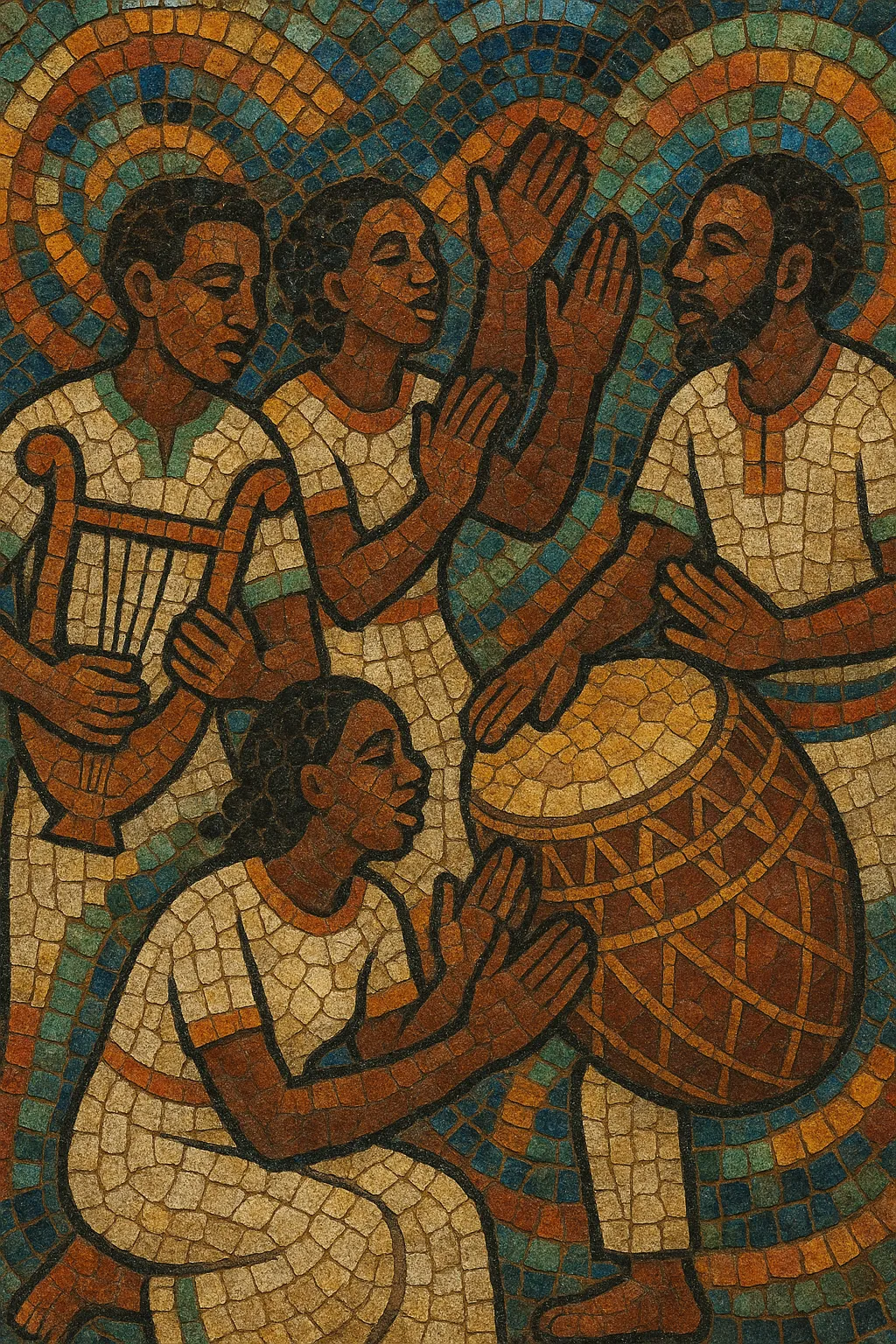Welayta music is the traditional and popular music of the Wolayta (Welayta) people of southern Ethiopia. It features driving communal rhythms, call‑and‑response singing, and pentatonic (five‑note) melodic shapes delivered in the Wolaytta language.
Performances are closely tied to social contexts—weddings, harvest celebrations, and especially the New Year festival Gifaataa—where dance is inseparable from the sound. Handclaps, ululations, and antiphonal choruses amplify the energy, while indigenous instruments such as krar (lyre), masenqo (one‑string fiddle), and kebero/kabaro drums lead the groove.
In modern settings, electric bass, keyboards, and drum machines often reinforce the pulse, but the vocal phrasing, speech‑song inflections, and cyclical structures remain rooted in folk aesthetics.
Welayta music developed as a community practice among the Wolayta people in southern Ethiopia. Songs accompanied work, courtship, and rites of passage, with dance and collective clapping integral to performance. The music’s pentatonic contours and responsorial vocals align with wider Ethiopian and East African traditions while preserving distinct Wolayta dialectal prosody and dance gestures.
During the 1900s, regional cultural troupes helped codify stage versions of folk repertoires for schools, theaters, and festivals. With the spread of radio and later cassette culture (1970s–1990s), local studios in and around Sodo recorded wedding singers and cultural ensembles, circulating songs across the Southern Nations, Nationalities, and Peoples’ Region (SNNPR). These recordings reinforced common rhythmic cells (often compound meters and off‑beat clapping) and standardized instrumental pairings (krar/masenqo with kebero).
From the 2000s onward, VCDs, satellite TV, and YouTube brought Wolayta songs and Gifaataa festival performances to a broader Ethiopian and diaspora audience. Producers blended traditional grooves with Afropop textures—electric bass ostinatos, synth pads, and programmed drums—while retaining call‑and‑response hooks and communal refrains.
Across eras, Welayta music emphasizes cyclical form, participatory choruses, and dance‑led arrangement. Even when electrified, the melodic language stays largely pentatonic, and timbral signposts—masenqo slides, krar strums, ululation—anchor newer sounds to their folk roots.


